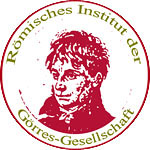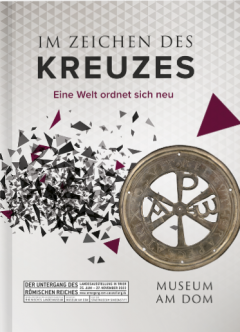Unfortunately out of print: the excellent books on the major exhibition "Decline of the Roman Empire" in Trier
Thanks to courageous friends, the two volumes finally made it to Rome (to the PIAC): The catalogue "Der Untergang des Römisches Reiches" (The Fall of the Roman Empire), which is much more than a mere catalogue of the exhibited objects, and the volume accompanying the exhibition in the Museum am Dom Trier "Im Zeichen des Kreuzes" (In the Sign of the Cross), edited by Markus Groß-Morgen, also a catalogue including introductory essays. The exhibition took place in the second half of 2022 and was hosted by the Dommuseum, the Rheinisches Landesmuseum and the Stadtmuseum Simeonstift. The two catalogues were soon out of print.
The volumes are gems not only because of the clarity of their structure and the sobriety of their presentation, but also because of the brevity and diversity of the contributions. Basically, the catalogue of the National and City Museum in particular offers a captivating introduction to Late Antiquity from the perspective of archaeology. The general theme is the question: How did the fall of the Roman Empire, which was believed to be eternal, come about? Was Christianity to blame, as one Symmachus already thought? Of course, behind such an exhibition there is also the dark question of whether the present Europe, this time Christian, does not bear similar crisis phenomena, if not signs of doom, now through a de-Christianisation.
The volume of the Cathedral Museum shines with contributions by Lothar Schwinden, Andrea Binsfeld, Winfried Weber, Hiltrud Merten, Wolf-Rüdiger Teegen, Markus Gross-Morgen, Lukas Clemens, Marvin Seferi, Kirstin Jakob and others on early Christianity in the imperial city of Trier. Among other things, the focus is on Bishop Paulinus of Trier and the early church buildings with their tombs, which are now also being examined using the latest technical analyses.
- Details
- Written by: Stefan Heid
- Category: Recommended reading
 Römisches Institut der Görres-Gesellschaft
Römisches Institut der Görres-Gesellschaft







